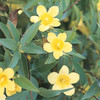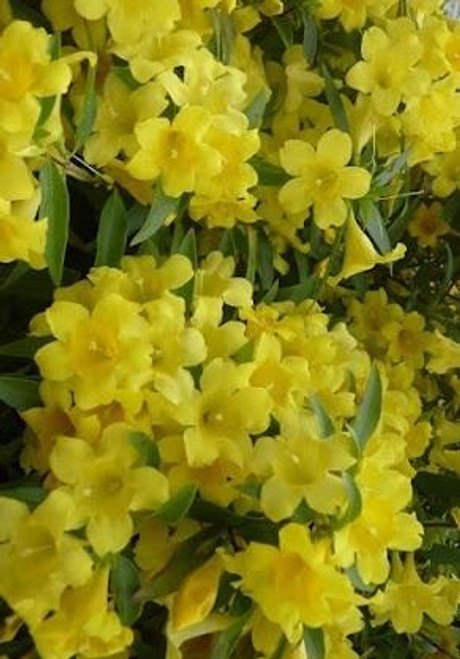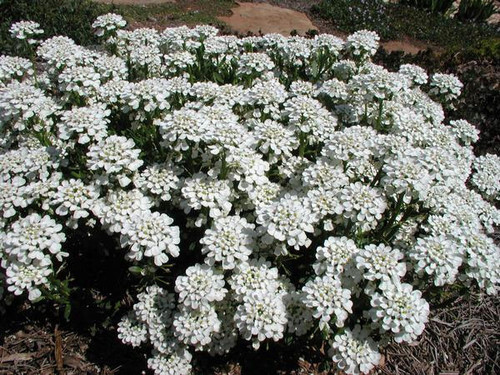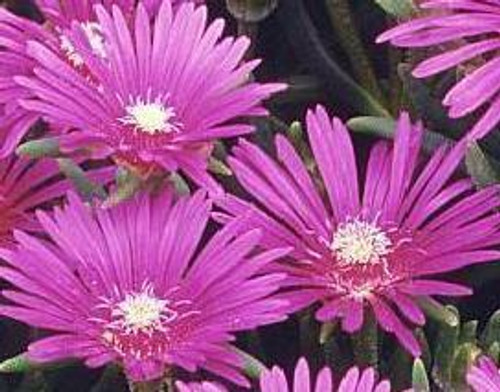Product Description
Gelsemium sempervirens (3.5-inch pot)
Common Name: Carolina Jessamine
- Height: 36 Inches, climbing height 20'
- Hardiness Zone: 7-9
- Sun to Part Shade
- Evergreen - Native in the Southeast
- Fragrant, Yellow Flowers in Spring
- Good choice for covering trellises, arbors and fences
- Drought Tolerant once established
- Adapts to most soil conditions
- Erosion control
- State flower of South Carolina
Gelsemium sempervirens, also known as Carolina jessamine or yellow jasmine, is a climbing vine native to the southeastern United States. It is a popular ornamental plant for its fragrant flowers, which bloom in the spring.
Gelsemium sempervirens is a perennial plant that can grow to a height of 10-20 feet. The stems are slender and twining, and the leaves are lanceolate and dark green. The flowers are yellow and trumpet-shaped, and they are borne in clusters of 2-5 flowers. Carolina jessamine has yellow, fragrant, tubular blooms, 1.5" long. Blooms late Winter/early Spring. Blooms best in Full Sun. May bloom again in the Fall but less profusely. Green leaves are elongated, 1" to 4".
Gelsemium sempervirens is a relatively easy plant to care for. It prefers full sun to partial shade and well-drained soil. It is drought-tolerant once established, but it should be watered regularly during the first year after planting. Gelsemium sempervirens is not particularly susceptible to pests or diseases.
Gelsemium sempervirens is a beautiful and fragrant plant that is a great addition to any garden. It can be grown as a climber on a trellis or fence, or it can be allowed to trail over a wall or rock. Gelsemium sempervirens is also a popular choice for bonsai.
- Water regularly, especially during the first year after planting.
- Fertilize lightly in spring or fall.
- Prune in late winter or early spring to shape the plant and encourage new growth.
- Prefers moderately moist, well-drained soil.
- Tolerates most soil conditions and is drought tolerant once established.
- It is a twining vine climbing up to 20'.
- Sprawling unsupported it can be used as a bushy ground cover for slopes or banks for erosion control.
- Cut back after blooming to maintain a neat coverage.
Gelsemium sempervirens, commonly known as Carolina Jessamine or Yellow Jessamine, is a beautiful and fragrant flowering vine native to the southeastern United States. Here is a breakdown of its key features:
Gelsemium sempervirens (Carolina Jessamine)
- Type: Evergreen vine (can also be grown as a shrub with pruning)
- Hardiness Zones: 7-10 (some sources say 6-10)
- Growth Habit: Twining vine, can climb up to 20 feet or more
- Flowers: Trumpet-shaped, bright yellow, fragrant (especially at night)
- Bloom Time: Spring (typically late winter to early spring)
- Foliage: Glossy, dark green, lance-shaped leaves
- Light: Full sun to partial shade
- Soil: Well-drained, adaptable to various soil types
- Water: Drought-tolerant once established, but prefers consistent moisture during the first year
- Uses: Trellises, fences, arbors, groundcover (with careful pruning), container plant
Why Carolina Jessamine is a Great Choice
- Beautiful Flowers: The bright yellow, fragrant flowers are a welcome sight in early spring.
- Evergreen Foliage: Provides year-round interest and greenery.
- Attracts Pollinators: The flowers attract bees, butterflies, and hummingbirds.
- Relatively Low Maintenance: Once established, it is fairly easy to care for.
How to Grow Carolina Jessamine
- Planting: Plant in spring or fall. Choose a location with well-drained soil and full sun to partial shade.
- Support: Provide a support structure such as a trellis, fence, or arbor for the vine to climb on.
- Watering: Water regularly during the first year to establish the root system. Once established, it is drought-tolerant, but it appreciates occasional watering during dry spells.
- Fertilizing: Fertilize in early spring with a balanced fertilizer.
- Pruning: Prune after flowering to control growth and shape. You can prune it to maintain a shrub-like form if desired.
- Mulching: Apply a layer of mulch around the base of the plant to retain moisture and suppress weeds.
Potential Problems
- Pests: Aphids, spider mites, and scale insects can be occasional pests.
- Diseases: Root rot can be a problem in poorly drained soil.
- Toxicity: All parts of the Carolina Jessamine plant are poisonous if ingested. It contains toxic alkaloids, including gelsemine. Keep away from children and pets.
Important Note: Carolina Jessamine is a beautiful and fragrant plant, but it is important to remember that it is highly poisonous. Exercise caution when handling it and keep it away from children and pets.
Carolina Jessamine is a wonderful addition to any garden, providing beautiful flowers, evergreen foliage, and attracting pollinators. Just remember to handle it with care due to its toxicity.
Other Details
The most important part of the plant is its root system. Healthy roots are the foundation of a healthy, vibrant plant. The type of plug container used is based on the specific needs of the plants. Perennials offered as bare root traditionally perform better when planted as bare root.Planted in a specialized mix, potted plants have well established root systems. Top growth stage will vary depending on the current life cycle and time of year when shipped. In Winter and early Spring dormant plants may be shipped. Dormant plants may be planted right away, even before the last frost date.
Most bare root varieties are field grown for at least one season, though Hemerocallis and Hosta are grown for two seasons. The bulk of the soil is removed during the harvesting process and the tops of most varieties are trimmed back to the crown. They are graded, packed in shredded aspen or sphagnum moss and stored in freezers until ready to be shipped.
See our Container Sizes and Bare Root Perennials pages for more information.
Plant information and care is provided in the Overview section, Plant Genus Page and general information is provided in the Planting Care & Guides. Additional questions can be asked on each Plant page.
Plant Spacing: Using the maximum mature spread or width of a plant to guide spacing, ensures space to grow to full size. To fill an area sooner, plant them closer together. Just remember, future thinning or transplanting may be needed.
Water: Keep a close eye on newly planted perennials, especially throughout the first growing year. Most early plant loss is due to too much or too little water!
Product Videos
Custom Field
Product Reviews
1 Review Hide Reviews Show Reviews
-
Very Nice
Received order within a few days of order. I was very leery when ordering as I had never ordered plants online. Upon arrival the plants, Carolina Jasmine, appeared healthy and in good condition. I immediately watered and waited a few days before planting. From the nursery side all was excellent, hopefully the plants will take in the TX heat...














